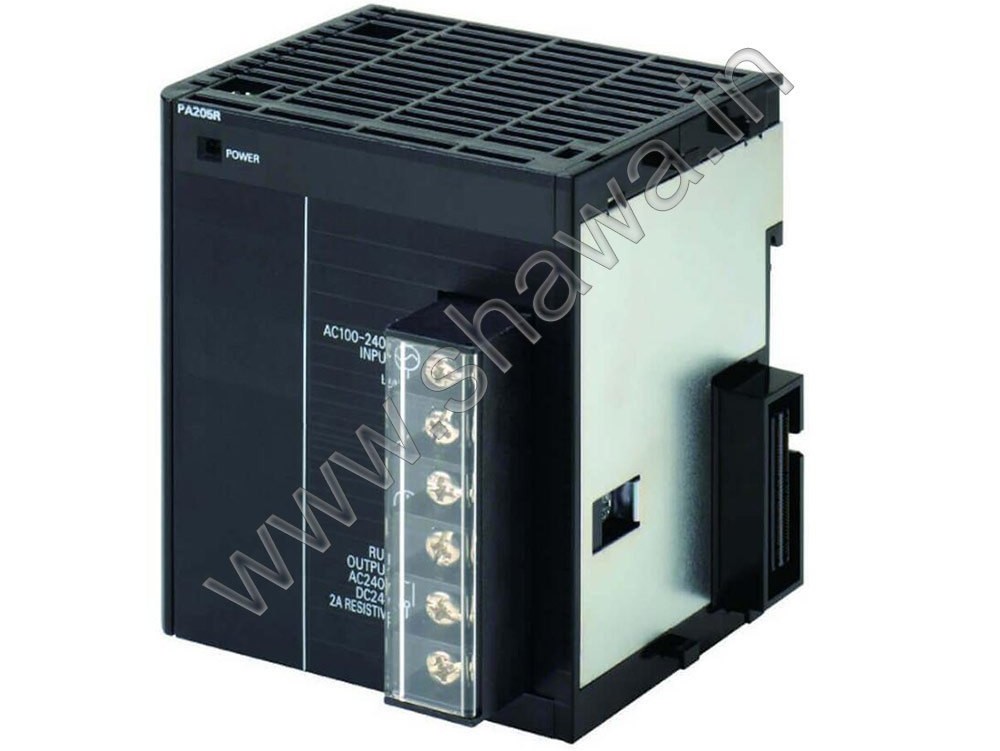
Power Supply Modules in PLC Systems | Refurbishment | Repair
In any industrial automation system, reliability and stability are paramount, and the backbone of this stability is often the power supply module. For Programmable Logic Controller (PLC) systems, the power supply module is crucial, providing the electrical power needed to ensure the smooth and continuous operation of all connected components. Without a dependable power supply, PLC systems cannot function properly, and the entire automation process could experience failures, downtimes, or inefficiencies.
The power supply module is designed to provide consistent voltage and current to a variety of devices in the control system, ensuring that the PLC operates without interruptions. Over time, as with any electronic component, power supply modules can face wear and tear, environmental stress, or even electrical faults, making regular maintenance and refurbishment essential. This blog will explore the critical role of power supply modules in PLC systems, their key features and benefits, and the importance of refurbishment, repair, and service solutions to keep these vital components running at their best.
What Is a Power Supply Module in a PLC System?
In the context of a PLC, the power supply module is a vital component responsible for converting incoming electrical power into a stable, regulated supply that is suitable for the PLC and its connected devices. It ensures that the PLC’s CPU, input/output (I/O) modules, and other peripherals receive the correct voltage and current to function reliably.
These modules typically include a range of features that enhance their performance, such as overcurrent protection, voltage regulation, and diagnostic capabilities. The power supply module may also be designed to handle a variety of input voltages, ensuring compatibility with different power sources in industrial environments.
Key Features and Benefits of Power Supply Modules in PLC Systems
Power supply modules are integral to the overall performance and stability of PLC systems. Here are some of their key features and benefits that highlight why regular servicing and repair are essential:
1. Voltage Regulation
One of the most important functions of the power supply module is voltage regulation. PLC systems and their components are highly sensitive to voltage fluctuations. A consistent, stable voltage output is necessary to prevent components from malfunctioning or becoming damaged.
Power supply modules are designed to ensure that the voltage supplied to the system remains within a specified range, even in the event of fluctuations or disruptions in the external power supply. This prevents issues such as system crashes, data loss, or physical damage to sensitive PLC components. In environments where voltage instability is a concern, a power supply module with good voltage regulation can significantly improve the reliability of the entire automation system.
2. Overcurrent Protection
Overcurrent protection is another critical feature of modern power supply modules. In industrial settings, various factors—such as short circuits, equipment malfunctions, or electrical surges—can cause excessive current to flow through the power supply system.
To safeguard against these risks, power supply modules often include built-in overcurrent protection mechanisms. These mechanisms detect when current exceeds safe levels and automatically disconnect the power to prevent damage to the module and other PLC components. Overcurrent protection adds an extra layer of safety to the system, ensuring that the PLC is not compromised due to electrical faults or excessive loads.
3. Compact Design
In industrial environments, space is often limited, and maximizing the use of available space is essential for efficient system design. Power supply modules are typically designed to be compact and space-efficient, allowing them to fit into smaller enclosures or cabinets without taking up unnecessary room.
Despite their compact design, these modules are engineered to provide sufficient power capacity for the entire PLC system, ensuring that the control system operates efficiently. The small form factor of modern power supply modules makes them ideal for integration into tight spaces while still meeting the power requirements of the automation system.
4. Redundancy
In critical applications where uptime is crucial, power supply redundancy is a key feature. Some power supply modules are equipped with redundancy features, such as dual power inputs or hot-swappable modules. These features allow the PLC system to continue operating even if one power supply fails.
For example, dual power inputs mean that if one power source fails, the backup input will take over without interrupting system operations. Hot-swappable power supply modules allow for the replacement of a faulty unit without turning off the entire system, minimizing downtime and ensuring that the PLC remains operational at all times.
5. Wide Input Voltage Range
Power supply modules are designed to be compatible with a broad range of input voltages, enabling them to work with different power sources. This wide input voltage range makes power supply modules versatile and adaptable to various industrial environments, where power sources may vary.
Whether the PLC system is being used in a region with a specific voltage standard or in an environment with fluctuating power supply conditions, a power supply module with a wide input voltage range can ensure compatibility, reducing the need for additional equipment or complex setup configurations.
6. Diagnostic Capabilities
Advanced power supply modules often come equipped with diagnostic functions. These features allow operators to monitor the voltage levels, detect faults, and troubleshoot any potential issues with the power supply system. By providing real-time feedback on the health of the power supply, operators can take preemptive action to avoid system failures or downtime.
Some modules include built-in indicators, such as LEDs, to display the status of the power supply, making it easier to identify issues quickly. In more sophisticated systems, the power supply module may be integrated with remote monitoring tools, allowing for more detailed diagnostic data to be gathered and analyzed.
7. Compliance with Industry Standards
PLC systems, including their power supply modules, must meet strict safety and performance standards to ensure the integrity of the automation process. Compliance with industry standards and certifications guarantees that the power supply modules meet safety requirements and operate reliably in industrial settings.
By adhering to these standards, power supply modules ensure that they are safe to use in a variety of environments and applications, providing the necessary peace of mind for industrial operators.
Power Supply Module Services: Refurbishment, Repair, and Maintenance
Over time, power supply modules can face performance issues due to environmental stress, component wear, or electrical faults. Refurbishment, repair, and regular maintenance services are essential to keeping power supply modules functioning at their best. These services can help restore performance, extend the life of the module, and minimize the risk of unplanned downtime.
Refurbishment Services for Power Supply Modules
Refurbishing a power supply module involves restoring it to its original operational condition by addressing any issues caused by wear and tear or environmental damage. The refurbishment process typically includes:
- Inspection: Thorough inspection of the power supply module to identify damaged or worn components such as capacitors, resistors, or connectors.
- Cleaning: Removal of dust, dirt, and corrosion to ensure proper electrical connections and prevent overheating.
- Component Replacement: Replacing damaged or degraded components with high-quality, compatible parts to restore full functionality.
- Testing: Rigorous testing to ensure the module’s output is stable and consistent, and that it meets the required voltage and current specifications.
Refurbishing power supply modules is a cost-effective solution for businesses that want to extend the life of their existing equipment while maintaining optimal performance.
Repair Services for Power Supply Modules
When a power supply module fails or malfunctions, prompt repairs are essential to avoid disruptions to the PLC system. Repair services typically involve:
- Diagnostic Analysis: Identifying the root cause of the malfunction, whether it’s a component failure, electrical fault, or environmental issue.
- Repair or Replacement of Faulty Components: Replacing damaged components with high-quality replacements to restore the module to full functionality.
- System Testing: Ensuring that the repaired power supply module operates correctly and that the voltage output is stable.
Repairing power supply modules allows businesses to restore functionality quickly and efficiently, often at a fraction of the cost of purchasing a new unit.
Preventive Maintenance for Power Supply Modules
Preventive maintenance is crucial for ensuring the long-term reliability and performance of power supply modules. Routine inspections, cleaning, and testing can detect early signs of wear or damage before they lead to failure. Preventive maintenance services typically include:
- Regular Inspections: Periodic assessments of the power supply module to identify potential issues such as component degradation, loose connections, or overheating.
- Routine Cleaning: Keeping the module free of dust, dirt, and debris that could cause performance issues or overheating.
- Testing and Monitoring: Regular testing of the output voltage and current to ensure the module continues to operate within the required specifications.
By proactively maintaining power supply modules, businesses can reduce the likelihood of unexpected failures, improve system stability, and extend the lifespan of their PLC components.
Why Choose Power Supply Module Refurbishment and Repair Services?
Choosing refurbishment, repair, and maintenance services for power supply modules offers several key benefits:
- Cost Savings: Refurbishing and repairing power supply modules is often more affordable than purchasing new units, making it a budget-friendly solution for businesses.
- Extended Lifespan: Regular maintenance, refurbishment, and repair can significantly extend the life of power supply modules, maximizing the return on investment.
- Reduced Downtime: By addressing issues early and restoring modules to full functionality, these services help reduce downtime, keeping operations running smoothly.
- Enhanced Reliability: Well-maintained power supply modules provide more stable and reliable performance, ensuring the continuous operation of PLC systems.
Conclusion
Power supply modules play a critical role in the stability and performance of PLC systems by providing consistent voltage and current to all connected components. Their importance cannot be overstated, as any malfunction or disruption in the power supply can lead to significant operational issues. Regular refurbishment, repair, and preventive maintenance are essential for ensuring that these modules continue to operate at their best, preventing downtime, and maintaining the integrity of the entire system.
By choosing professional services for power supply module refurbishment, repair, and maintenance, businesses can ensure reliable, long-lasting performance while reducing costs and enhancing system stability. Investing in the upkeep of power supply modules is an investment in the continued success and efficiency of your PLC-based automation systems.
 admin@shawa.in
admin@shawa.in  +91-9870100205
+91-9870100205 +91-9654048068
+91-9654048068


